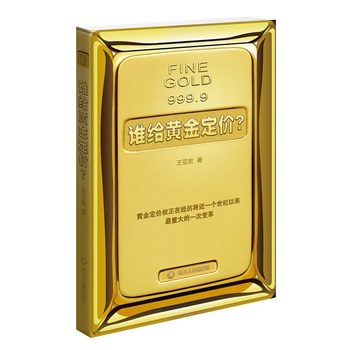Chinese book reveals secrets of gold pricing system
Updated: 2016-06-19 16:24
By Zhang Chunyan(chinadaily.com.cn)
|
|||||||||
 |
|
Front cover of Who Decides the Price of Gold? [Photo provided to chinadaily.com.cn] |
About 30 years ago, the price of gold was $35 per troy ounce. However, it surged as high as $1,900 per ounce in 2011. Now gold is around $1,200 per ounce. What factors drive the price of this precious metal?
As the biggest gold producing country and the world's largest bullion buyer, China has been in the spotlight for many years. What role can China play in determining gold prices?
A new book published this month, Who Decides the Price of Gold?, written by a Chinese researcher tells the history, secrets, changes and reform of gold prices, China's role in the global gold pricing system and also the trends and future demand to Chinese readers.
The book reveals that since 1919, the most common benchmark for the price of gold has been the London gold fixing, a twice-daily telephone meeting of representatives from five bullion-trading firms on the London bullion market. Furthermore, gold is traded continuously throughout the world based on the intra-day spot price, derived from over-the-counter gold-trading markets around the world.
One important highlight of this book is that it stresses that the presence of Chinese banks in the global gold pricing system can strengthen the nation's ties and cooperation with the global bullion market and increase transparency.
China never played a direct role in determining London gold prices until last year. In past years, gold prices in China were normally fixed through trading on the Shanghai Gold Exchange.
Last February, Bank of China Ltd became the first Asian lender to be a part of the auction process that sets gold prices on the London market. The bank also started participating in the twice-daily electronic auction.
With the entry of the Chinese lender, the book points out that the auction process will better reflect the gold supply and demand trends from the Chinese market.
China and India are the largest consumers of gold globally. The two countries account for more than 50 percent of the global demand. China is also the world's biggest importer of the yellow metal and consumes more than three times the amount of gold it produces.
The Bank of China's decision to join the gold pricing process has been widely welcomed by bullion market participants, who expect it to boost trading volumes.
According to the book, a larger and more diverse pool of participants in the pricing system will help maintain its transparency.
In the absence of transparency, gold prices can be rigged to benefit banks at the expense of producers, traders, investors, jewelry producers and other market participants, the book says.
The book also says that with its new role in the gold pricing system, the Chinese bullion market is set to take on a more international hue. And more Chinese banks will join the system soon.
Facts proved that the book is right. In 2016, the Industrial and Commercial Bank of China also joined the auction process to set the benchmark price of gold, beginning May 16. ICBC is the third Chinese direct participant to join the London Bullion Market Association gold price after the Bank of China and China Construction Bank.
This brings the number of participants to 13 alongside JP Morgan Chase Bank, Scotiabank, HSBC, Société Générale, UBS, Barclays and Goldman Sachs in the LBMA gold price, which formally replaced the near-century-old London gold fix on March 20.
Today's Top News
Goals may need revision
Brexit strategy
UK Health Minister comes down on staying in the EU
China, Europe urged to set free trade timetable
Xi's visit to boost partnership projects
First Disney resort in Chinese mainland opens
Killing of policeman 'incontestably terrorist act'
Cultural exchange photo exhibition opens in Poland
Hot Topics
Lunar probe , China growth forecasts, Emission rules get tougher, China seen through 'colored lens', International board,
Editor's Picks

|

|

|

|

|

|







